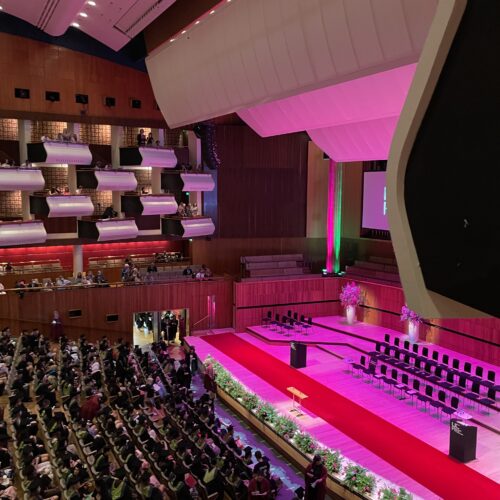
The purpose of drawing
iJADE Conference Drawing 2016
My role as programme leader for the new Drawing Degree has brought me to Chester University to participate in the iJADE (International Journal of Art & Design Education) conference 2016. Delegates had come from all round the world to present papers on a wide range of approaches to drawing. My interest in attending was both to discover new perspectives in drawing as a tool for education and also to consider the way practitioners from a wide variety of fields are using drawing as a major part of their research.
Eileen Adams opened the first day with her professional research into the purpose of art in education. The question of WHY do we make a drawing sat uppermost in my mind as we travelled through her deep archive of evidence. Eileen’s career extended from classroom teacher to researcher and campaigner for the importance of drawing in education. In order to understand what a drawing is for as part of a learning process she distilled precepts into four key areas: Perception, Communication, Invention and Action. It was interesting to see this root structure of our approach to drawing emerge in the delegates talks I attended throughout the two days.
Before I go on I would encourage any of you reading this that might be interested in the importance of drawing as a pre-verbal tool for analysis and reflection to look into Eileen’s work and follow some of the links below. The importance of drawing within all levels of our education system right now can’t be highlighted and fought for enough – in my opinion.

Simon Betts is the current Dean of College at Wimbledon College of Arts. On day one I was keen to hear his thoughts on the cross-disciplinary nature of drawing. In particular Betts discussed how bio-medical science students utilised drawing as part of their studies. The purpose of drawing in this instance was especially important, it became a tool for analysis and visualisation, in order to enhance the students understanding and enquiry of for example, a bone structure in the human body. Betts’ de-mythologising of drawing enabled students across the divide between art and science languages to engage and form a purpose to use drawing – that why do we draw again!

The relationship between Art and Science was highlighted once more by the artists and keynote speaker Antony Hall. The idea of a line as a boundary, which in his words ‘formed an unstable interface’, connected to a theme that emerged in his work of an oscillation in both material and idea. It was interesting to see how an artist who tried to work out very difficult problems, in the hope of discovering a new visual paradigm in his work, used drawing as a tool for invention, communication and discovery of new possibilities.
One of the most fascinating papers in terms of his developing research came from Adolfo Ruiz from the University of Alberta, Canada. His research took him to the Tlicho lands and people (an indigenous region in Canada) who maintain a purely oral history. He wanted to understand how the relationship between people, land and an oral history worked. Through talking to the elders in the village and exploring drawing as a ‘trace’ or memory of this oral history they produced drawings which became a kind of artefact of the culture. For me so many questions came out of his presentation that I’m still thinking about it and looking forward to further developments in his research.

I could talk about many more of the papers presented but I want to finally mention the work of Jeff Adams from the University of Chester. His interest for drawing extends from his research into comics and graphic novels. His chosen creative form is usually writing but in this instance he wanted to extend his gathered research from projects in Palestine and the University of Bethlehem to create an ongoing series of drawings with the working title of ‘A Comic Book of Pine Trees’. The startling thing about the form of his drawings was there was no narrative in the book and yet the structure of the drawing engaged me on a kind of visual journey that compelled me to feel like something was happening in the quietness between the rhythmic dance of the branches. Drawing as a non-verbal form of communication was striking and connected with recurrent themes from the conference as a whole.
Further information:
iJADE 2016 http://cfar-biad.co.uk/index.php/723-ijade-conference-2016-cfp-drawing
NSEAD http://www.nsead.org/home/index.aspx
Eileen Adams
The Campaign for Drawing: http://thebigdraw.org/
Adams, E. Agent of Change, Loughborough Design Press Ltd, 2016
Simon Betts
http://centrefordrawing.org.uk/portfolios/simon-betts/
https://teachingexchange.arts.ac.uk/latd/2015/sessions/betts/
Antony Hall
http://www.antonyhall.net/
Adolfo Ruiz
http://www.adolforuiz.org/
Jeff Adams
https://www.chester.ac.uk/departments/education/staff/jeff-adams
Adams, J. Documentary Graphic Novels and Social Realism. Oxford: Peter Lang, 2008






Having done all my communication through language, both spoken and written, for over 40 years of teaching, it has taken me 4 years to discover the usefulness of sketching what I want to do & it has been a ‘soft’ transition which has enabled me to express myself differently – it’s as if another person has emerged from inside me.
Very interesting to hear about your use of drawing as someone who has worked predominantly in written form. This chimes with the approach of Jeff Adams and certainly poses some interesting creative possibilities.
I have learned to value drawing above any other method of information gathering. I can look at a photograph taken long ago and barely remember taking it, but if I look at a drawing it immediately conjours up what the day was like, what the weather was doing, how I was feeling, what I could hear, in addition to the recorded information about what I was seeing. I wonder if there is a process happening in the brain when I draw which is similar to the process scientifically proven to happen to brain chemistry by the simple act of putting one foot in front of the other and walking…..now acknowledged as profoundly effecting mood (positively)?
I was at the conference with Doug and it was fascinating to see the range of drawing activity from around the world. I was lucky to work with Eileen Adams and her resources are excellent, especially the small drawing booklets available to buy from the Big Draw. Whether you want to understand more about the different purposes of drawing, explore ways to use drawing with others or expand your own practice.
You can download for free some booklets I wrote with a colleague at the University of Brighton, on drawing to learn in Higher Education, here’s the link: http://about.brighton.ac.uk/visuallearning/drawing
Our research in HE showed that drawing was often seen to be the prerogative of art and design. Teachers in other subject areas lacked the confidence to make the most of drawing as means of learning, partly because they felt they needed a specialist art and design vocabulary to talk about the drawings their students produced. Some of them said they wouldn’t use drawing with students because they felt they lacked drawing skills. We produced the leaflets because we believe drawing has the potential to cross all discipline boundaries and we wanted to show some simple ways to make a start.
Really great being at the conference with you Angela. I look forward to extending the conversation with you.
Apart from the ever present encouragement for distance learning students of meeting in a group, the specialist subjects we study open up the field of experience for us in an informal setting and a helpful cross discilplinary group. This day was no exception with Doug cleverly guiding us out of any fear of drawing by introducing the first exercise as a collaborative effort and thus removing any precious ownership. This set the tone for a relaxed journey through the rest of the day. I felt that I had learned a lot. The student group time in the afternoon was, as ever, very useful with Doug effectively checking and guiding each group and individual. My personal thanks to Doug for moving me on in my studies.
Paddy Howe